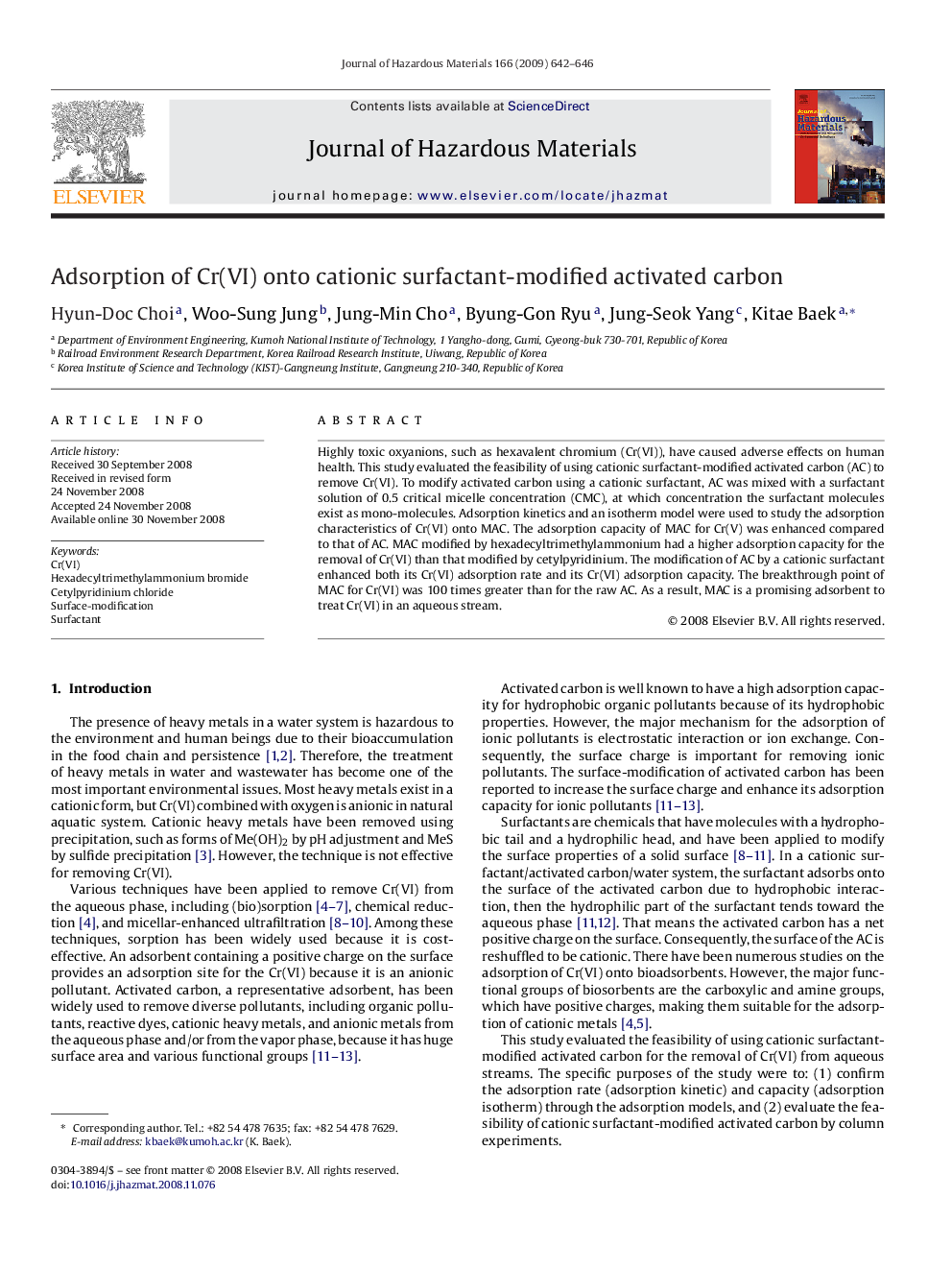| Article ID | Journal | Published Year | Pages | File Type |
|---|---|---|---|---|
| 581991 | Journal of Hazardous Materials | 2009 | 5 Pages |
Abstract
Highly toxic oxyanions, such as hexavalent chromium (Cr(VI)), have caused adverse effects on human health. This study evaluated the feasibility of using cationic surfactant-modified activated carbon (AC) to remove Cr(VI). To modify activated carbon using a cationic surfactant, AC was mixed with a surfactant solution of 0.5 critical micelle concentration (CMC), at which concentration the surfactant molecules exist as mono-molecules. Adsorption kinetics and an isotherm model were used to study the adsorption characteristics of Cr(VI) onto MAC. The adsorption capacity of MAC for Cr(V) was enhanced compared to that of AC. MAC modified by hexadecyltrimethylammonium had a higher adsorption capacity for the removal of Cr(VI) than that modified by cetylpyridinium. The modification of AC by a cationic surfactant enhanced both its Cr(VI) adsorption rate and its Cr(VI) adsorption capacity. The breakthrough point of MAC for Cr(VI) was 100 times greater than for the raw AC. As a result, MAC is a promising adsorbent to treat Cr(VI) in an aqueous stream.
Keywords
Related Topics
Physical Sciences and Engineering
Chemical Engineering
Chemical Health and Safety
Authors
Hyun-Doc Choi, Woo-Sung Jung, Jung-Min Cho, Byung-Gon Ryu, Jung-Seok Yang, Kitae Baek,
